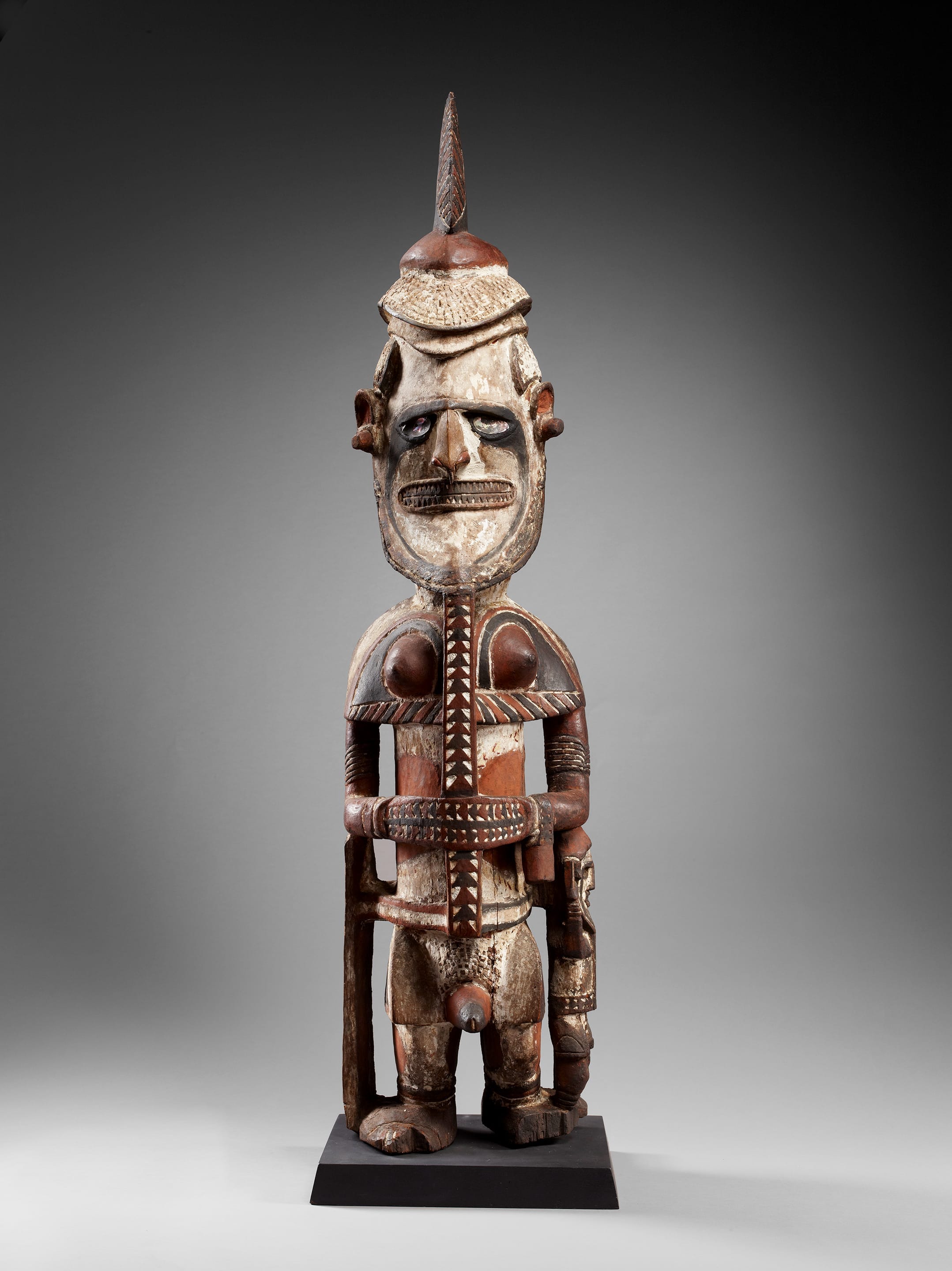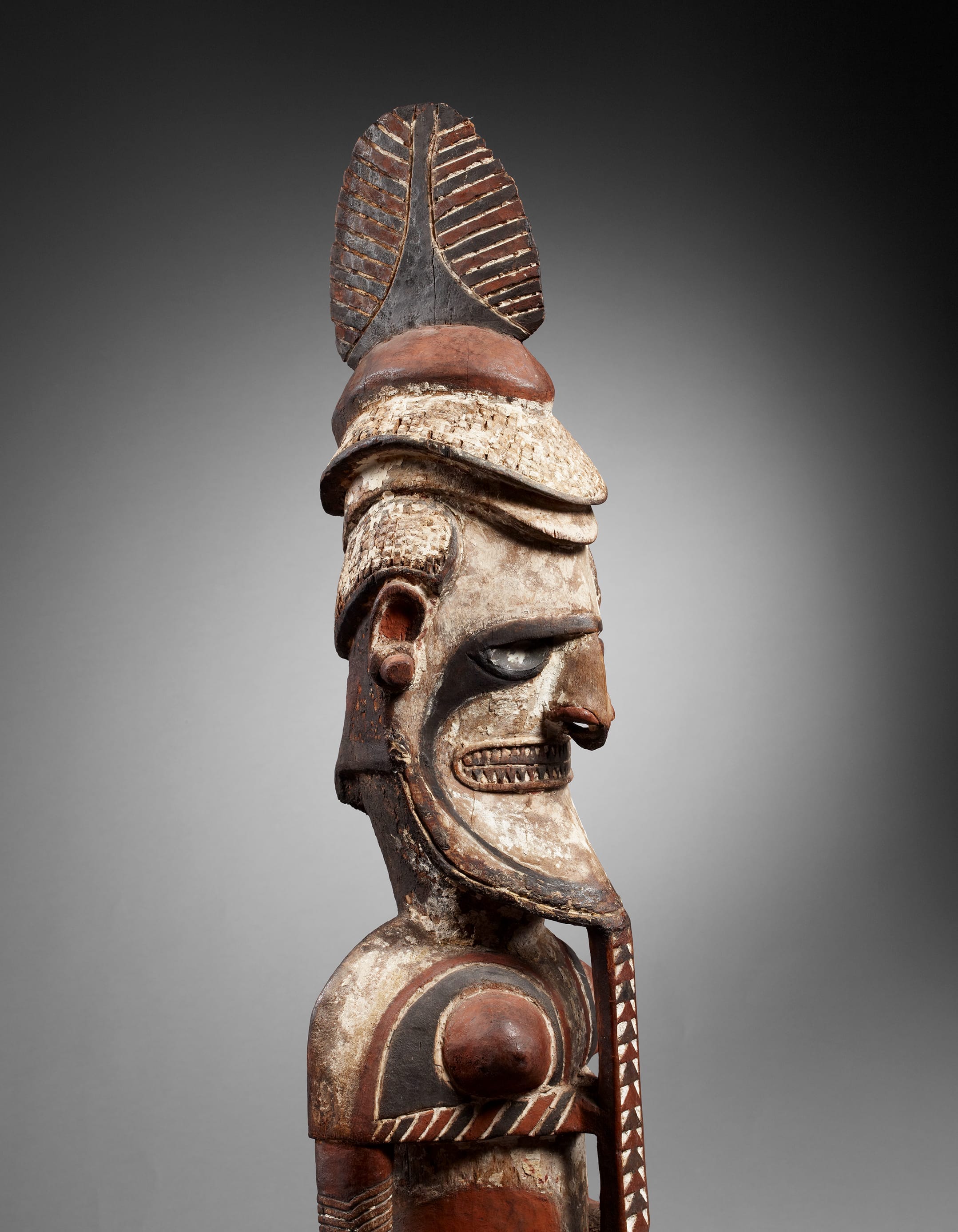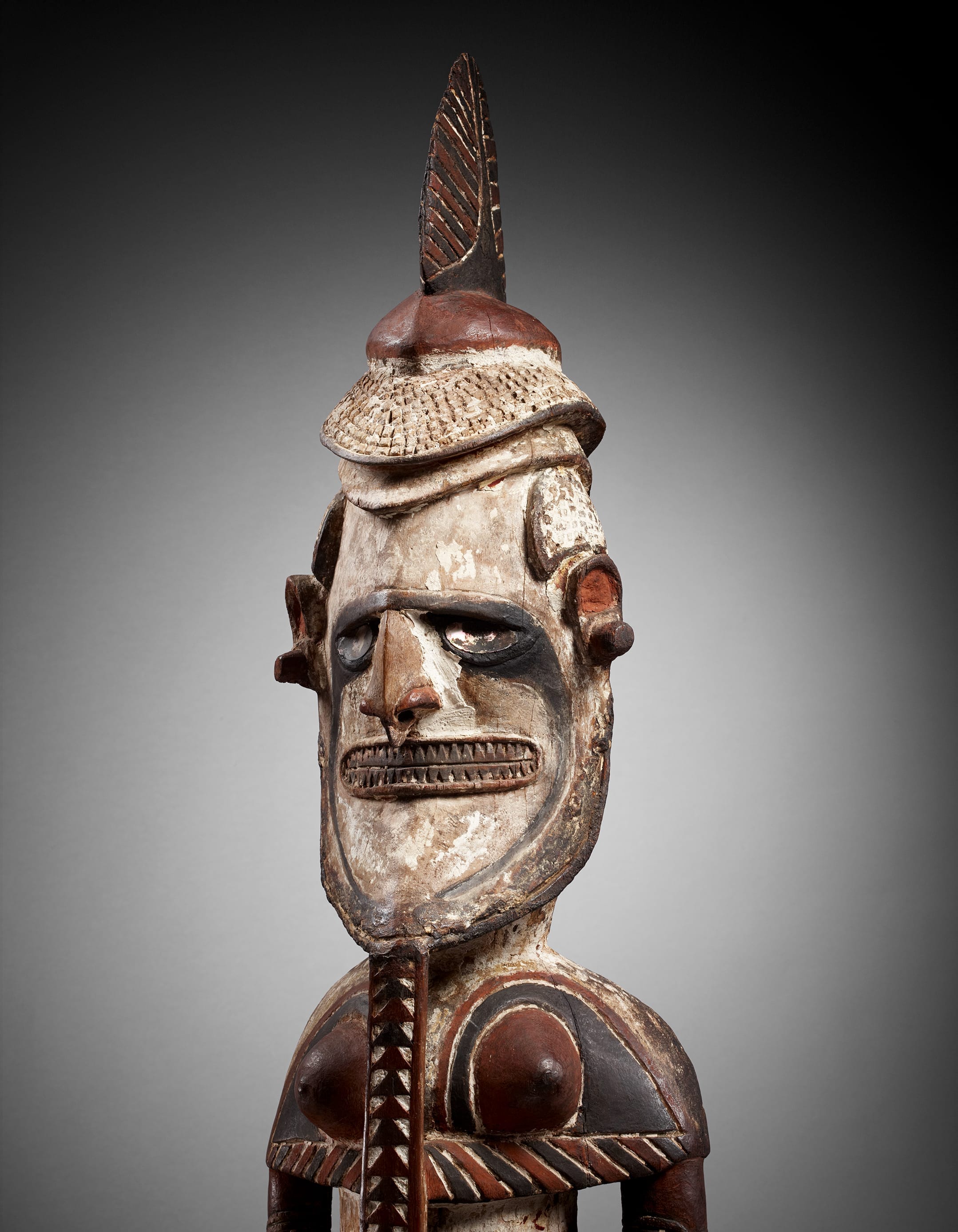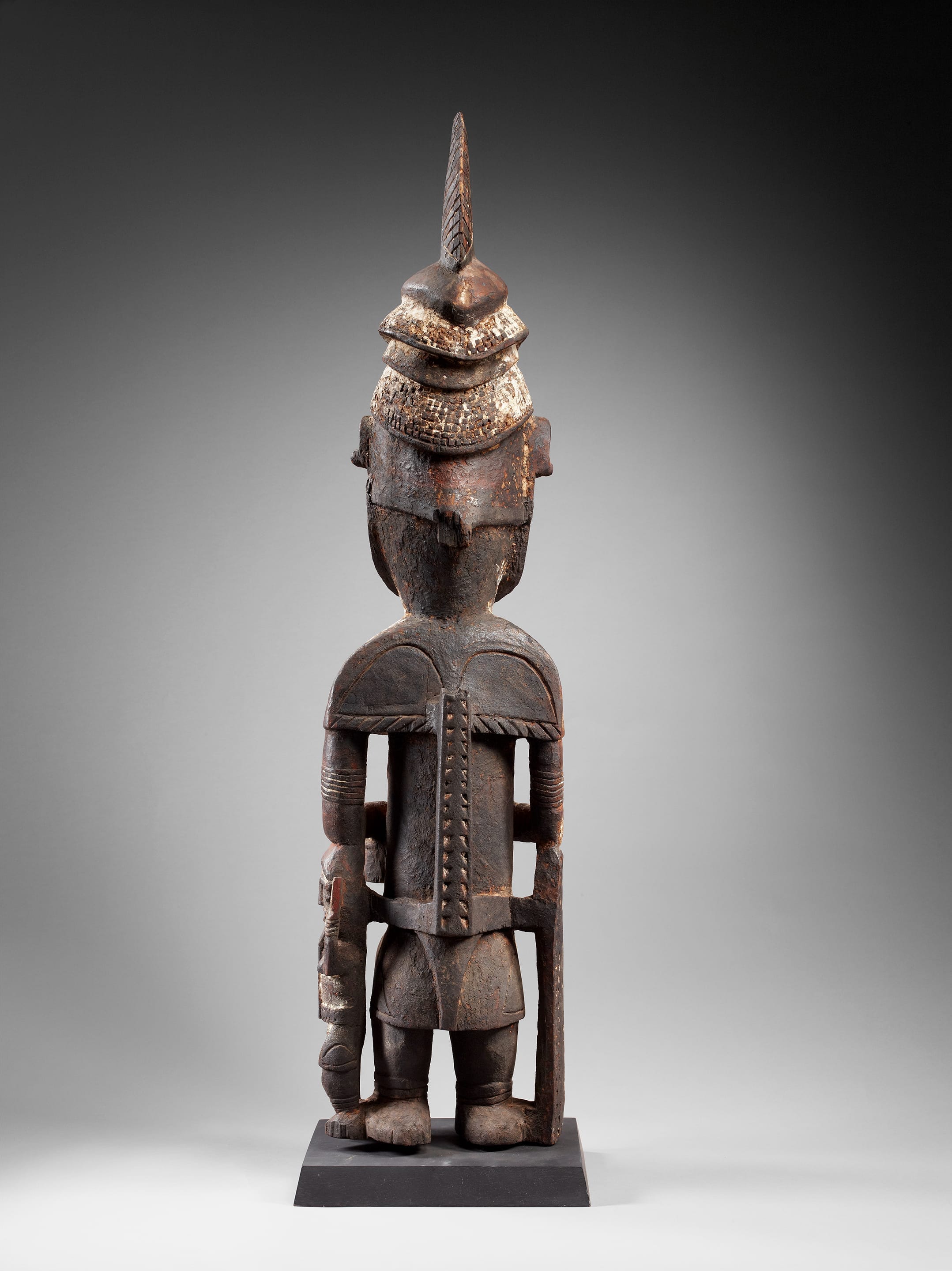"Uli", from the north of New Ireland in Melanesia, are large figures regarded as vessels of the power of the clan’s ancestors. They were displayed during the burials of great warrior chiefs and played a central role in the accompanying rites. Between two deaths, the sculptures were venerated and jealously preserved in the men’s house. These powerful and terrifying ancestors did not represent a particular warrior but the essence of the clan they protected, whose social standing they endorsed. The attributes of power, procreation and death are all encapsulated in one body. The male attributes represent the physical strength with which the figure protects the clan and the breast its responsibility to feed the clan and ensure fertility. The sculpture is therefore the image of the clan, each organ of which plays a precise part in the smooth functioning of the whole. The production and worship of these sculptures appear to have ceased early in the 20th century with colonisation.




